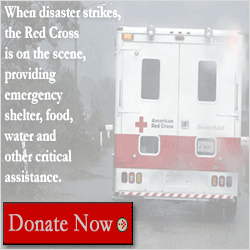« Tillinghast Study on Older Age Mortality | Main | It's a bat, it's Superman , no . . . it's an actuary? »
July 05, 2005
Record-Breaking 2004 Hurricane Season to change Catastrophe Modeling and Approach to Aggregate Events
 The 2004 hurricane season has led to a much greater focus on aggregate risk and this will prompt changes in catastrophe risk assessment, attendees at the Casualty Actuarial Society (CAS) Spring meeting heard.
The 2004 hurricane season has led to a much greater focus on aggregate risk and this will prompt changes in catastrophe risk assessment, attendees at the Casualty Actuarial Society (CAS) Spring meeting heard.
Randall Brubaker, senior vice president, Aon Corp, noted that companies buying reinsurance today are much more interested in aggregate probable maximum losses (PMLs) than they were before. "Our ceding company clients are continually more interested in understanding and reinsuring aggregate PMLs," he said. Brubaker noted that up until last year, most of the hurricanes were missing the U.S. coastline, but that changed dramatically last season. This was due to a change in the upper atmospheric weather pattern in the U.S.
"Last year we had a ridge of high pressure in the East that caused the hurricanes to get pulled further west into the Caribbean before turning north. That's what caused them to converge on Florida," he said.Brubaker said the question is whether this is a trend. "Is this going to continue and something we're going to see several seasons in succession? I don't think anybody knows that, at least if they do they aren't saying anything."
He noted that hurricanes Charley, Frances, Ivan, and Jeanne resulted in estimated losses of $22.8 billion, according to latest Property Claim Services (PCS) figures. While any of those four hurricanes by themselves are not particularly rare events, the single season occurrence of all four together is rare. Brubaker said that the four hurricane events initially had led to wide ranging loss estimates among catastrophe modeling companies. In addition, actual losses differed from predicted losses in certain areas.
While information on 2004 losses is still being gathered and analyzed, he anticipated there would be a number of changes to catastrophe models this year and in 2006. Adjustments for frequency, revised damageability ratios at lower windspeeds and for select construction types, and a review of demand surge functions based on season losses, rather than individual occurrences, can be expected.
Brubaker also predicted a greater focus on the quality and completeness of exposure data for catastrophe models in the months to come. "Going forward we are probably going to see more effort and discipline about putting together exposure data for catastrophe modeling," he said. As for the impact on the reinsurance market, Brubaker remarked that the 2004 hurricane season has not driven up reinsurance pricing, although the changes in catastrophe models might affect reinsurer pricing models in future.
"The 2004 hurricane season did not have a significant impact on the renewal of treaties at 1/1/2005. The catastrophe reinsurance market is model driven not experience driven. In fact, abundant capacity is having a bigger effect on reinsurance pricing than the 2004 hurricanes," he said. In the industry in general, there is still abundant capacity and there are still significant amounts of investor capital looking to get into the property catastrophe business, he added.
Thomas Hettinger, managing director, EMB America LLC, noted that the reinsurance market post-2004 has reacted differently from post-hurricane Andrew in 1992. In the past, after a shock event the market would harden. "After Hurricane Andrew, the catastrophe market hardened significantly. By contrast, these four events did not have as big an impact on the reinsurance market as originally thought," he said.
Why not? "Actuaries have developed more sophisticated catastrophe modeling techniques that have become core tools for helping companies understand their risks," stated Hettinger. He went on to note that for the most part, reinsurance market premiums appear to be staying the same or softening.
Hettinger noted that last season's four hurricane events has led to a definite shift away from the traditional approach to buying reinsurance. Many insurers have a different view of risk after last year.
"This opened people's eyes to what could happen. In the past people were not that worried about aggregate events, now in potential gaps in coverage created due to a second event and the timing of payments from the Fund, said Hettinger.
He went on to highlight the need for carriers to use company enterprise risk models, with catastrophe model outputs being a core component. Carriers should use the different catastrophe model outputs to better understand the risks facing them, and stress the results from these models. "Take this as a wake-up call to push modeling to help you," he said.
Hettinger noted that there is an ongoing process of change and improvement in catastrophe modeling and in helping people to better measure and get their arms around risk."When catastrophe models first came out how many people understood what a one in 100-year event was? That was a great leap," he said.
Posted by Tom Troceen



